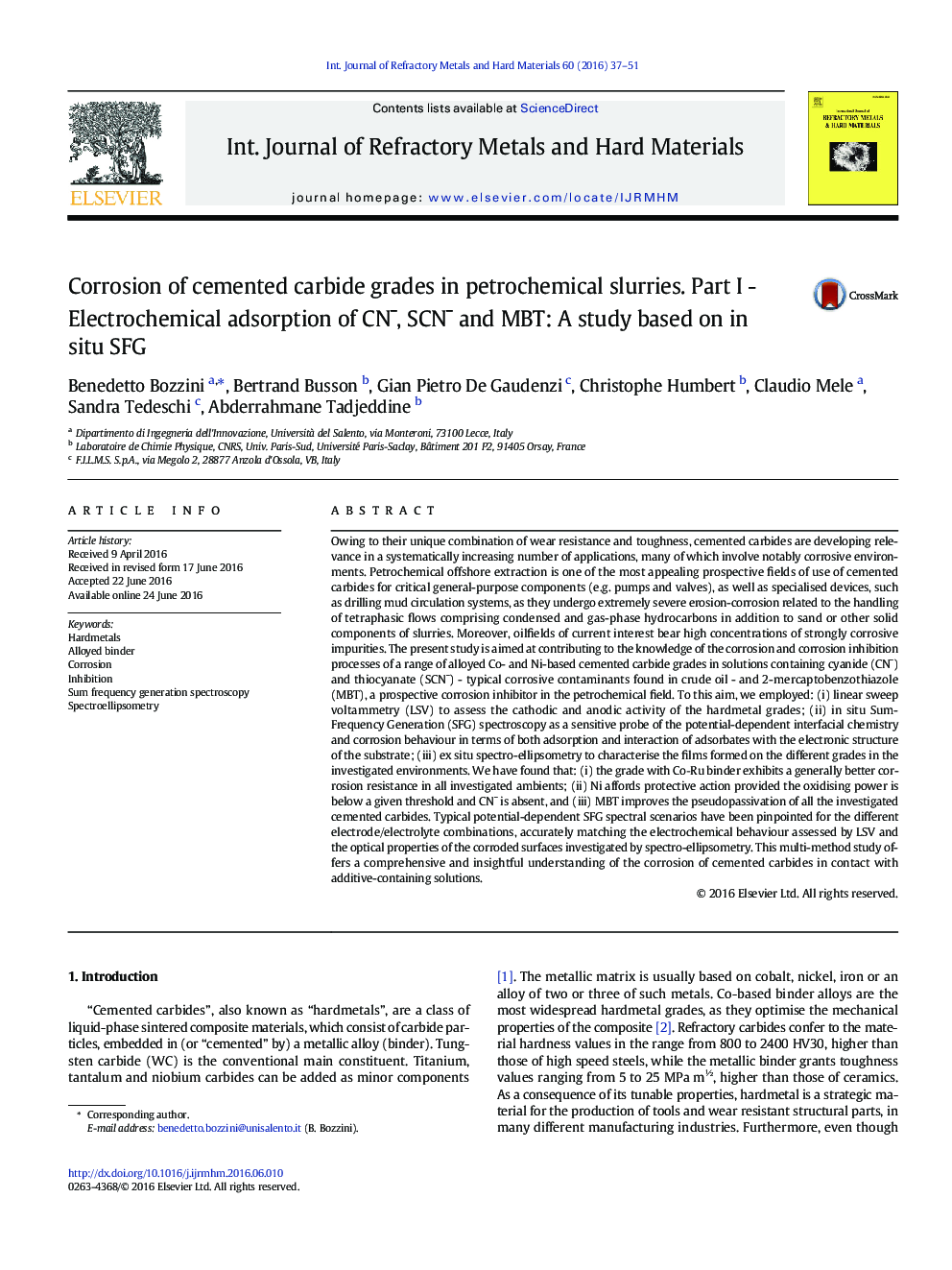| Article ID | Journal | Published Year | Pages | File Type |
|---|---|---|---|---|
| 1602549 | International Journal of Refractory Metals and Hard Materials | 2016 | 15 Pages |
•Corrosion of alloyed hardmetals by oil contaminants and inhibition processes•Role of ruthenium and nickel related to oxidising power and CN¯ content•2-mercaptobenzothiazole as a corrosion inhibitor for hardmetals•Sum-Frequency Generation spectroscopy for understanding of corrosion mechanisms
Owing to their unique combination of wear resistance and toughness, cemented carbides are developing relevance in a systematically increasing number of applications, many of which involve notably corrosive environments. Petrochemical offshore extraction is one of the most appealing prospective fields of use of cemented carbides for critical general-purpose components (e.g. pumps and valves), as well as specialised devices, such as drilling mud circulation systems, as they undergo extremely severe erosion-corrosion related to the handling of tetraphasic flows comprising condensed and gas-phase hydrocarbons in addition to sand or other solid components of slurries. Moreover, oilfields of current interest bear high concentrations of strongly corrosive impurities. The present study is aimed at contributing to the knowledge of the corrosion and corrosion inhibition processes of a range of alloyed Co- and Ni-based cemented carbide grades in solutions containing cyanide (CN¯) and thiocyanate (SCN¯) - typical corrosive contaminants found in crude oil - and 2-mercaptobenzothiazole (MBT), a prospective corrosion inhibitor in the petrochemical field. To this aim, we employed: (i) linear sweep voltammetry (LSV) to assess the cathodic and anodic activity of the hardmetal grades; (ii) in situ Sum-Frequency Generation (SFG) spectroscopy as a sensitive probe of the potential-dependent interfacial chemistry and corrosion behaviour in terms of both adsorption and interaction of adsorbates with the electronic structure of the substrate; (iii) ex situ spectro-ellipsometry to characterise the films formed on the different grades in the investigated environments. We have found that: (i) the grade with Co‐Ru binder exhibits a generally better corrosion resistance in all investigated ambients; (ii) Ni affords protective action provided the oxidising power is below a given threshold and CN¯ is absent, and (iii) MBT improves the pseudopassivation of all the investigated cemented carbides. Typical potential-dependent SFG spectral scenarios have been pinpointed for the different electrode/electrolyte combinations, accurately matching the electrochemical behaviour assessed by LSV and the optical properties of the corroded surfaces investigated by spectro-ellipsometry. This multi-method study offers a comprehensive and insightful understanding of the corrosion of cemented carbides in contact with additive-containing solutions.
